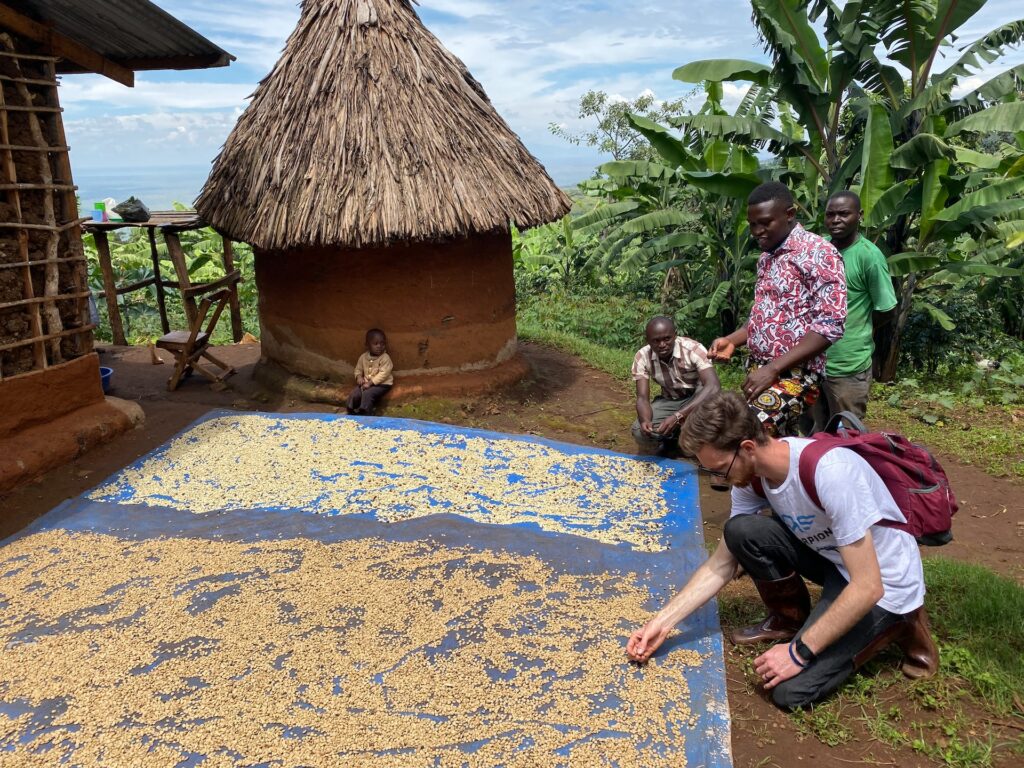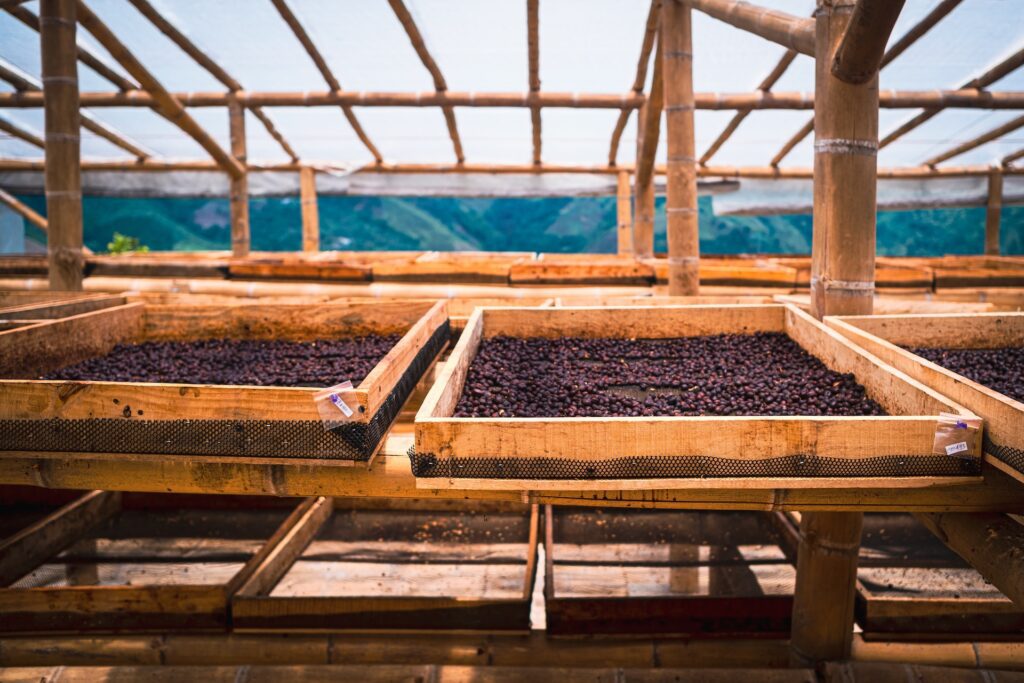Methods for Specialty Coffee Processing
Before specialty coffee can be consumed by the general public, the coffee must go through processing to prepare it for consumption. Processing is more than just the growth and organization of coffee seeds, however, coffee processing methods can have a large impact on the final flavor of the coffee roast. In this case, coffee processing refers to the methods used to separate the coffee seed (the actual “bean” that gets roasted) from the cherry (the fruit that makes the coffee), with three main methods to processing specialty coffee: Washed, Natural, and Honey Process.

Washed Process
The Washed Process method of coffee processing is the most common processing method around the world. After being harvested, fresh coffee cherries are “depulped,” where the exterior fruit is removed from the coffee seed, after which the seeds are fermented for 12-36 hours. After this short fermentation period, the seeds go through a wash to remove all the “mucilage” (The leftover fruit pulp) from the seed, usually through an agitating water bath. This is repeated until the seeds are clean, after which seeds can be re-sorted for quality and sun-dried, before being sent out to coffee roasters. Washed Process coffees are typically described as “clean-tasting”, giving a clear and unaltered flavor of only what the coffee has to offer.
Natural (AKA Dry) Process
The Natural Process (sometimes called Dry Process) method of coffee processing is the oldest and most environmentally friendly processing method, requiring little to no water to complete the process. As opposed to the washed process, coffee seeds are left within the coffee cherry during their drying and fermentation period, which can take 3-4 weeks compared to the 1-2 weeks Washed Process Coffees take. After a full drying and fermentation process, the fruit and parchment layer of the coffee cherry is removed, and the seeds are sorted for shipment to roasters. This longer period of time allows the coffee cherry to infuse with stronger fruit flavors, and are typically described as tasting sweeter and fruitier.
Honey (AKA Pulped Natural) Process
The Honey Process (sometimes called Pulped Natural) method of coffee processing is a unique process that many specialty coffee drinkers find very interesting. It is somewhat split between the Washed and Natural Processes — The fruit layer of the cherry is removed within the first 24 hours, albeit without water, and the fruit mucilage is left on the seeds during the drying and fermentation process. Some farms may even take the pulp that was removed and place it back on top of the coffee seeds while they dry, creating a stronger fermentation environment and allowing more contact between the seeds and the fruit. Honey Processing can take 3-4 weeks, like the natural process, or even longer, depending on the producers. Honey-processed coffee also comes in grades that are decided after the coffee is roasted and tasted, ranging from White Honey, Yellow Honey, Red Honey, and finally to Black Honey.

The Anaerobic process starts with handpicked, mature coffee cherries that have a Brix degree (a measurement of sugar content) near 26. The coffee is depulped and placed in stainless steel tanks with all its mucilage. As the fermentation begins, oxygen decreases and the carbon dioxide increases creating pressure in the fermentation tank. The coffee develops in a unique mix of lactic acid and malic acid, which contributes to the coffee’s complex flavor. Once ready, the coffee is 100% sun dried.
No One Process is Best
Coffee processes, and their resulting flavors, are subjective. Every process brings its own unique flavor profile, but no one process is better than another. Shop our various coffee offerings and see the differences for yourself!
